
In the previous entry of this series I talked about how great the Freestyle Street Basketball, 3on3 Freestyle, Dunk Nation 3x3, and Basketrio designs were. The different game studios from South Korea, Taiwan, and China were pulling cues from street culture, actual NBA stars, and creating characters with the styling of urban vinyl figures. I mentioned that these were the types of toys that I wanted to see more in real life. The game studios had lots of inspiration to pull from. Michael Lau, Eric So, Brothersfree, Neco Lo, IT Rangers, Bee Wong, Colan Ho, Jason Siu, Joel Chung, Steven Lee, Wendy and Kelvin Mak, Pal Wong, Ken Leung, and Hyperchild were there at the start of a movement. They helped push toys, art, fashion, and even video game designs into the future. They deserved all the respect, and appreciation that I could give them.
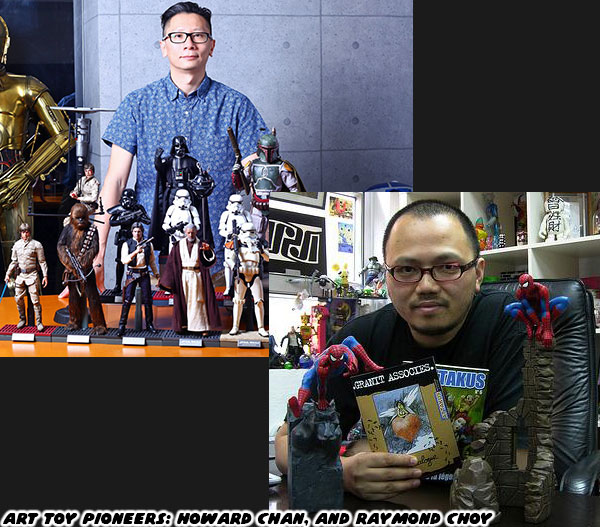
Figures that had great detail such as those created by Hot Toys founder Howard Chan, or as imaginative as the ones by Raymond Choy, the founder of Toy2R did more to contemporary collectables than we could ever know. Decades ago I had collected the Super-X figures from Dragon Models, and I wished that there might be something new in that vein. My wish eventually came true thanks to the brilliant artist
Jei Tseng of JT Studio. Mr. Tseng was arguably the best 12” figure designer of the past few years. His characters were inspired by superheroes like the Justice League, and Teenage Mutant Ninja Turtles, video games including Mega Man, traditional literature like Journey to the West, anime such as Astro Boy, and even classic movie heroes like Charlie Chaplin, and Felix the Cat. The thing was that none of the JT Studio releases were necessarily licensed. They were simply inspired by pop culture. It was his eye for detail, his ability to capture the essence of the culture that made his figures works of art.
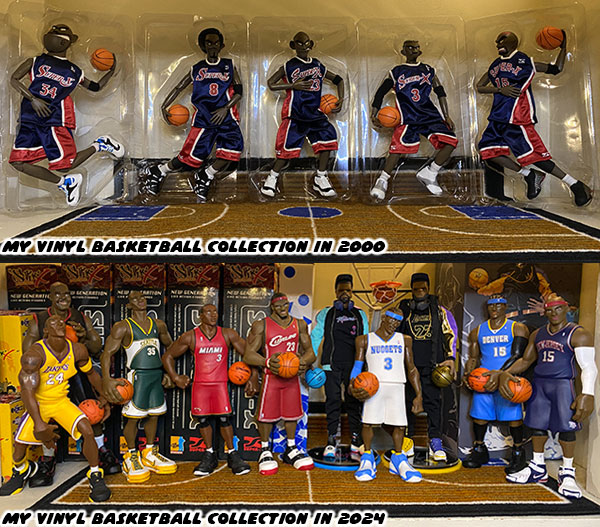
He was very much a creator as Michael Lau, Eric So, or CoolRain were. Jei designed two basketball figures. The
King (based on LeBron James) and Flash (based on Dwyane Wade).
Released in 2020 they were part of JT’s Street Mask series. The masks were symbolic of the characters they were portraying. An extra layer of understanding was being added to his already masterful depictions. The use of supporting details, and storytelling elements was a tradition that started with Lau's gardeners in the late '90s. Michael Lau invented the gardener universe where his characters came to life. The Street Mask universe was just as imaginative. According to JT Studio there were two clans fighting for control of the streets, the "Crazy D" which were fighting for their dreams, and the "Night M" wanted to destroy all the dreamers. It was the battle of light, and darkness. In addition to athletes the Street Mask world was also populated with skaters, and b-boys.
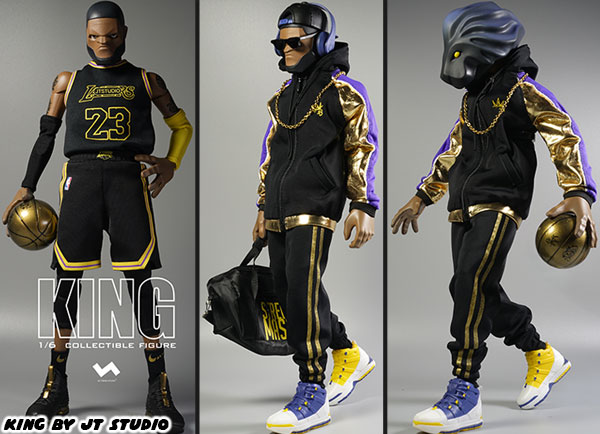
The lion was the king of the jungle, a fierce predator, and hence it was the mask worn by a fictional streetball player that called himself King. LeBron of course had often been referred to as “King James” as well. According to canon the only player to ever give the King a run for his money was known as Flash.
This happened to be the same nickname given to Dwyane Wade by Shaq of all people. This character had a different temperament than the aggressive King. He was granted a mask of a panther, because he was more stealthy, and speedy with his plays. He used his quickness to fly past defenders, as opposed to the King who would plow through them.
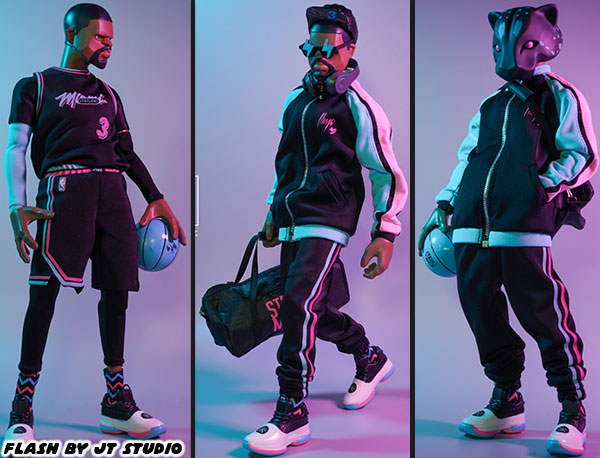
The King, and Flash would become friendly rivals. They had heated one-on-one battles on the street courts. Neither built a winning record as they literally went back, and forth with victories. They were currently tied at 25 wins each. They represented the eternal rivalry between strength, and speed, rather than good, and evil. Despite the hard fought battles they still respected each other. This was the type of storytelling that I lived for. It pulled the personalities LeBron, and Dwayne off of the court, and away from a specific time, or season. The figures came with casual, and game uniforms, plus a change of hands, and various accessories. As the kids might say they had the “hardest drip” of any toys ever released. They elevated what designer streetball figures could be, and were essentially the basketball collectables that I had been waiting all my life for. I just didn’t think that I would have to wait for decades to pass for them to turn up.
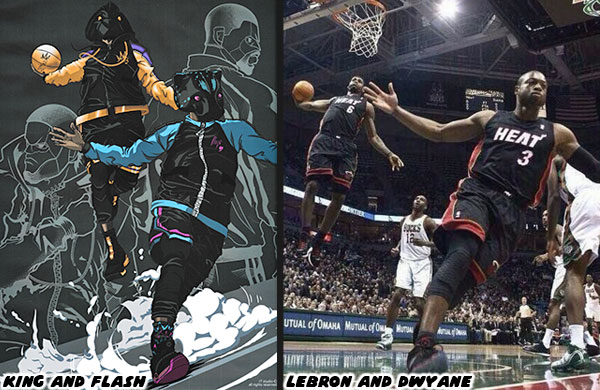
To put in context what I liked about the Flash, and King, versus an
Enterbay figure of LeBron, or Dwyane; I would say that it was hard to pick a specific moment that best represented them. A figure of LeBron from his first championship with the Miami Heat, his third championship with the Cleveland Cavaliers, and his fourth with the Los Angeles Lakers would each look different. A fresh faced college Dwyane from his rookie year, and a bearded veteran Dwyane also told a different story. Choosing one, or even two seasons for the athletes felt limiting. Those were the types of nuances that some collectors would gladly pay top dollar for. I could appreciate the work that went into the sculpts, painting, and costumes on those figures. That was absolutely what I loved about the collection of 12" figures that my brother had. His Marvel, DC, and various science fiction figures were definitely some of the greatest toys I had ever seen.
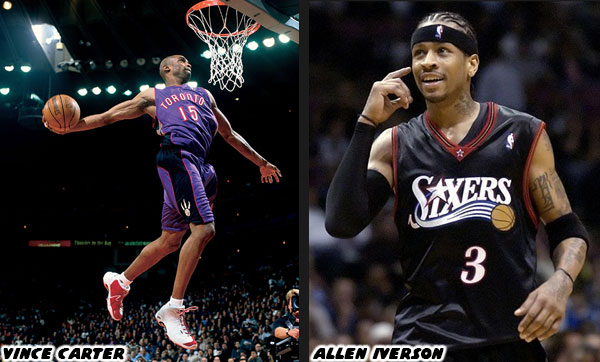
The high-end NBA figures by Enterbay, Hot Toys, and other licensed studios looked amazing. They were literally mini statues that could proudly be displayed next to any painting, or photograph. These models were accurate down to the color of the eyes, hairstyles, sneakers, and tattoos sported on the various players. By the same token they focused too much on one moment. They were basically higher priced versions of the million other seasonal toys, and collectables out there. To me that diminished their impact. With that in mind I still loved the All Star Vinyl figures, however several of the players in the lineup were at the end of their careers, and not when they were at their peak physically, or culturally. I would rather have had Vince Carter in a Toronto Raptors uniform, or Allen Iverson in a Philadelphia 76ers jersey than the respective New Jersey Nets, and Denver Nuggets colors. These looks meant much more to fans of the players than whatever team they were with at that moment.
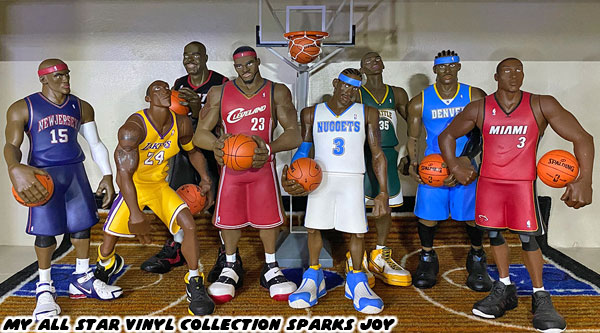
The toy companies, or in this case trading card companies of the 2000's were limited by license deals. They were aware of the new crop of Hong Kong designers, but didn't completely understand how they were remixing culture. They had not been paying attention to the rise of domestic indy creators, and artists from the '90s. They weren't able to win back the fans that they lost to McFarlane Toys, or Image comics in that decade. I wanted something more unique, a toy that wasn't locked into one specific moment in time. More important I wanted a figure that represented the game, and captured the culture. That snapshot of an era was what I saw in the Street Mask line. It was the same feeling that the gardeners created for me more than 20 years ago. I saved up for months, and finally added the King and Flash to my lineup in the spring of 2024. I was amazed when I opened up the boxes, and took in the level of craftsmanship from JT Studio. They complimented my Super-X, and All Star Vinyl figures better than I could have ever hoped for.
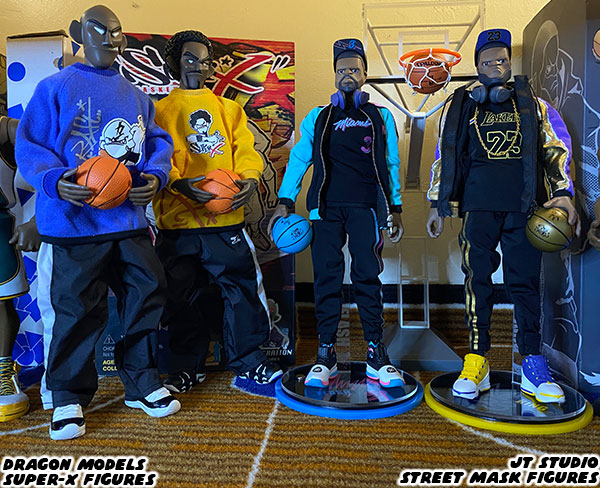
The evolution in design, and manufacturing from JT Studio was noticeable. The older Super-X figures had doll-like uniforms, and street clothes. The fashion looked good, but hung loosely on their 12" frames. They couldn't hold poses too well, and their sneakers would slide off their feet easily. By comparison the Street Mask figures had fitted outfits, and tons of extra hands, that were sculpted to fit them perfectly. In addition they weighed more, and felt much more solidly built than the Super-X figures. I never could justify spending the amount of money collecting the Marvel, Star Wars, or other licensed figures my brother had, however I would be lying if I said my 1/6 scale collection was to end here. If JT Studio decided to make another streetball figure then I'd be the first in line to order it. I wanted badly to see what a center, international player, or old-school icon might turn out in Mr. Tseng's trademark style. Just the thought of it inspired me to start illustrating again. It also made me want to create an emergency toy fund... just in case. I prayed that it wouldn't take 20+ years to see another figure that spoke to my interests.
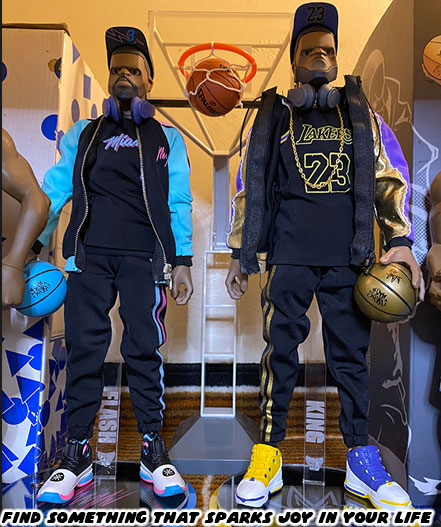
No matter what the future held I knew that the next great thing would come from Asia. I was certain that the new creators from Hong Kong, Taiwan, China, South Korea, and Japan would become masters of remix culture, just as the previous generation had.
I hoped that you enjoyed this look at my favorite designs, and designers. Organizing my collection made me revisit many favorites, and discover voices that I had overlooked. More important they made me rethink the way I thought about counterfeits, clones, tributes, and homages. Were there any figures, or toys that you spent top dollar on? Were there any you wish you had gotten? I’d like to hear your thoughts on the comments section. As always if you would like to sponsor me
please visit my Patreon page and consider donating each month, even as little as $1 would help make better blogs, podcasts, or buy a future streetball figure!











No comments:
Post a Comment